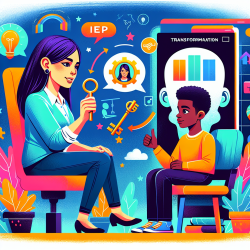As practitioners dedicated to creating great outcomes for children, we are always on the lookout for innovative, evidence-based models that can enhance our practice. One such model is the Partnering for Change (P4C) framework, which has shown promising results in transforming occupational therapy services to support inclusive education. This blog delves into the research behind P4C and offers actionable insights for practitioners.
What is Partnering for Change (P4C)?
The P4C model is a needs-based service delivery approach that emphasizes collaboration among occupational therapists, teachers, families, and children. The goal is to build capacity within schools to support all children, not just those with identified disabilities. Key principles include:
- Collaboration: Occupational therapists work closely with teachers and families to identify and address challenges in real-time.
- Coaching in Context: Therapists provide hands-on support and model strategies directly in the classroom.
- Tiered Services: Services are provided at three levels—universal, targeted, and individualized—ensuring that all children receive the support they need.
How Does P4C Work?
In the P4C model, the whole school is viewed as the "client." Occupational therapists proactively collaborate with teachers to design inclusive learning environments. The tiered approach includes:
- Tier 1: Universal Services - Beneficial for all children, these services promote foundational skills and positive mental health.
- Tier 2: Targeted Services - For children needing additional support, often provided in small groups.
- Tier 3: Individualized Services - Intensive, tailored support for children with the most significant needs.
Implementing P4C: What Practitioners Need to Know
Implementing P4C requires a shift in mindset and practice. Here are some key takeaways for practitioners:
- Build Collaborative Relationships: Foster strong partnerships with teachers and families to create a supportive network.
- Focus on Capacity Building: Equip teachers with the skills and knowledge to support all children effectively.
- Provide Authentic Services in Context: Work directly in the classroom to address challenges as they arise.
Lessons Learned from P4C Implementation
Research has shown that P4C leads to increased participation, satisfaction, and reduced waitlists for occupational therapy services. However, successful implementation requires sufficient time, resources, and ongoing training for therapists.
Encouraging Further Research
While the P4C model has demonstrated success, there is always room for further research to refine and adapt the model to different contexts. Practitioners are encouraged to engage in ongoing professional development and contribute to the growing body of evidence supporting inclusive education.
To read the original research paper, please follow this link: Partnering for Change: collaborating to transform occupational therapy services that support inclusive education.










